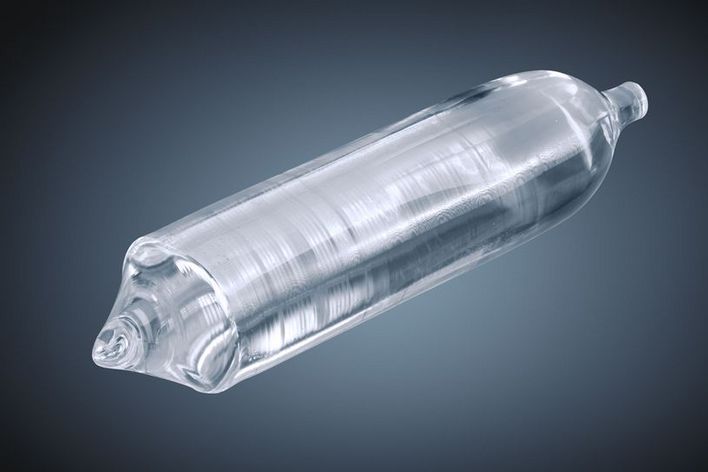Synthetic crystal production is becoming increasingly important. High-purity semiconductor materials such as silicon and silicon carbide as well as oxidic materials such as sapphire are particularly important in the industry. These are used to produce wafers or substrates for the semiconductor and solar industries.
Crystal pulling
Optimum structures with long-time stable generators

Zone floating process
During this process, a vertical polycrystalline bar (e.g. silicon) is continuously melted (1.5-4 mm/min) in a single-turn inductor with a diameter of a few mm and pulled below the inductor to form a single, highly pure crystal. The two bars rotate in opposite directions and do not come into contact with other materials or crucibles. The diameter of the pulled crystal is usually around 200mm. The high purity of the crystals make them suitable for power semiconductors. This process uses TRUMPF Hüttinger generators with tube technology because high frequencies (2-3MHz) at high outputs (80-120kW) are required.

Czochralski process
The Czochralski process is the most common crystal growing technology. The single crystal is pulled from a melt that is located in a crucible. For silicon, the crucible undergoes resistance heating. Higher melting crystals (sapphire) use inductively heated crucibles with graphite casings. Using a rotating seed crystal immersed in the melt, the single crystal is pulled at several millimetres per hour. It is vital here to avoid any temperature fluctuations. Generators therefore need to deliver constant output power over extended periods of time. Between 20 and 100kW of power at frequencies of around 15kHz are required.
Physical Vapour Transport (PVT process)
The PVT process (Physical Vapour Transport) is used to produce high-purity silicon carbide (SiC) crystals for the semiconductor industry. Temperatures exceeding 2200°C are first generated inside an inductively heated graphite crucible. This causes the starting material to enter a gaseous phase. The resulting particles of carbon and silicon are transported by a carrier gas, e.g. argon, through natural transport mechanisms to a cooler seed crystal above. Condensation and crystallization to a high-purity single crystal then takes place without any chemical reactions. Precise control of the temperature in the reactor is essential for the success of the process. The reactor is heated using TRUMPF Hüttinger generators in the medium frequency range (5 - 0kHz) with up to 50kW rated power.
